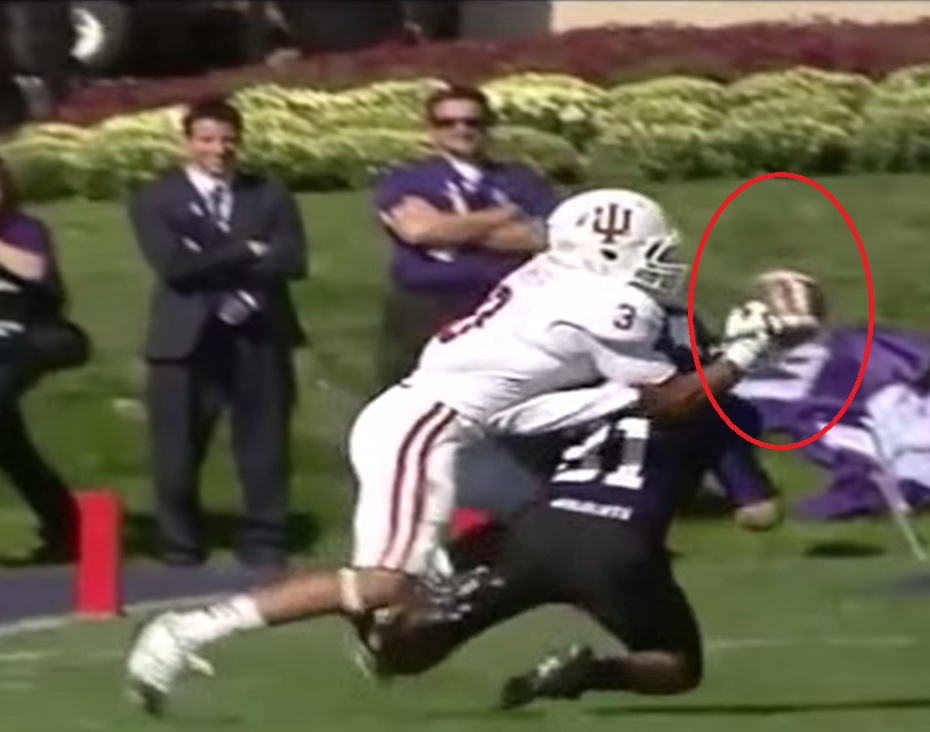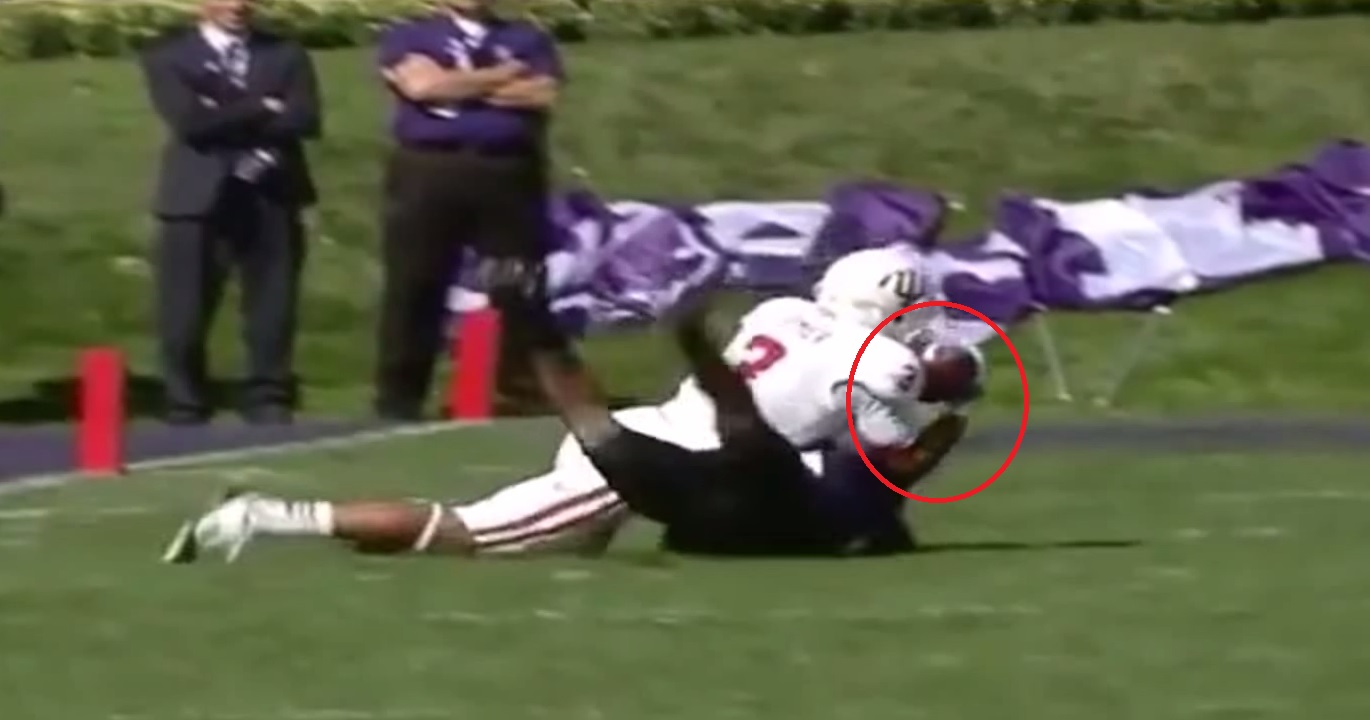Gut Checks is a series of one-player articles designed to help fantasy owners understand what to notice--good or bad--when watching specific players. The players in these articles are fantasy prospects--regardless of Average Draft position--that Matt Waldman believes are worth monitoring this year.
There are some rookie prospects where I try to keep my admiration on the down-low. Last year, Cody Latimer was one of those options. It didn't help that Sigmund Bloom got excited about the Indiana wide receiver 6-8 weeks before the draft and poured out his love on Twitter like a lovesick romantic. By the time Cecil Lammey began his summer camp coverage of the Denver Broncos, Latimer became a household name at Footballguys in 2014.
While leagues filled with Footballguys readers have not forgotten Latimer, the second-year receiver could be out of sight-out of mind during the summer of 2015 for many fantasy owners. Until someone on a television show with the volume loud enough to cut through the bar noise says so, there are still plenty of fantasy owners who won't pay attention to Latimer, much less know he exists. Whether a fantasy owner is progressive or conservative about players that haven't proven their NFL worth, learning what makes a player worth monitoring throughout training camp has value. It's especially true when considering today's media environment where there is an over saturation of individuals covering football practices who are better writers and on-air personalities than they are football analysts.
Film aside, Latimer's team is enough to make him worth monitoring. Even if Gary Kubiak's return to Denver makes the Broncos offense more of a run-centric scheme, Peyton Manning's career twilight hasn't included a statistical fall from a cliff. Manning was the No.8 fantasy quarterback during a stretch of games between Weeks 9-17 last year where Denver cultivated the run game. It's reasonable to expect Manning to finish as no less than a low-end QB1 in 2015 despite the departures of Julius Thomas and Wes Welker. With Demaryius Thomas on one side of the field and Emmanuel Sanders expected to see more time in the slot, Manning will have a lot of opportunities to manipulate coverage to put Cody Latimer one-on-one with a cornerback.
This article illustrates what Latimer brings to the Broncos as a talent as well as certain traits and techniques of note when considering wide receiver play:
- Attacking at the earliest available target window
- Proper hand position at the catch point
- Using the fingertips to catch the ball
- Comfort making plays on targets in tight coverage
- Concentration vs. contact
Anatomy of Good Hands
What does it mean to have good hands? Concentration, coordination, strength, and timing all factor into a working definition. One simple, but important part of sure-handed receiving is the practice of correct technique. Football fans that haven't truly examined how often NFL receivers don't practice correct technique would be surprised how often this is the culprit behind untimely drops on Sundays.
The photos below provide an illustration of how the hands should be placed to catch the football when the target is above and below the waist.


Whenever possible, the the arms should be extended from the body to give the receiver an opportunity to attack the ball at the earliest possible window. Attacking the ball at an early window helps the receiver gain control of the ball prior to contact from a defender. And if the defender disrupts the reception with contact, weather conditions are poor, or the receiver loses concentration, the proactive attempt to catch the ball at the earliest window often provides the receiver time and space to make a second or third attempt on the ball.
Here's Latimer making a catch of a high target in tight coverage during his career at Indiana against the 2014 Jim Thorpe Award winner Darqueze Dennard (the Bengals first-round pick in 2014). Note the positions of the hands with the fingers to the sky as he attacks the arriving target.

Latimer's aggressive attack of the ball gives him a clear advantage to snare the pass without Dennard getting a shot to touch the ball. Latimer's arm extension also highlights how early Dennard makes contact with the receiver, which can help make interference fouls appear more obvious.
When the Latimer's hands meet the ball, notice that the receiver makes first contact not with his palms, but the pads of his fingertips. Those 8-10 fingertips act like multiple shock absorbers to prevent the ball from rebounding too forcefully from one broader surface like the palm of the hand. Maintaining the car analogy, the fingertips also act like multiple brakes when they make initial contact with the ball, stopping the rotation more effectively than the palms.

Proper attack of the ball also places Latimer in position to shield the defender with his back. Dennard has to go through Latimer to win the football, and short of an egregious interference foul, it won't happen. Because Latimer is a larger receiver at 6-2, 215 pounds, he'll often have 15-25 pounds on his competition, which helps when dealing with contact. Latimer has 15 pounds on Dennard and with his arms extended early enough to meet the ball, the Michigan State cornerback can only hope to disrupt the receiver's concentration.
While Dennard is pulling Latimer's chest and back to the ground, Latimer's arms and hands are free from the cornerback. It makes the receiver's job of securing the ball to his chest an easy one.

If Latimer was late to attack the target, Dennard has a greater chance to grab the receiver's arms during the act of making the grab, disrupting the mechanical process of securing the ball. This is why an aggressive attack at the earliest possible window is important.
Here's a more impressive catch from Latimer where he has to use underhanded technique against a cornerback with excellent position to defend the target. Consistently good technique is often the secret sauce behind impressive plays that are glossed over as "natural talent," and this play is a fine illustration. Latimer and the defender are tracking down a sideline fade and the cornerback is position inside Latimer's back hip. If there were no jersey numbers, one might think by position alone that No.31 is the receiver and No.3 is defensive back.

Part of having good hands position on targets against tight coverage is the receiver making sure his hands and arms are free of the defender. On this play, Latimer already has both arms in position that he can work over the shoulders of the cornerback well before the ball arrives. If the Latimer gets too tight to the defender with his forearms below the shoulder line of the defender, he has a much smaller chance of attacking the ball.

As the ball arrives, Latimer uses his height and reach to overcome the great position of the defender and it all begins with Latimer insuring that his arms are high enough to reach over the shoulders of his opponent. Unlike Dennard on the prior play, Latimer has not made notable or detrimental contact with his opponent. There are some overzealous officials that might levy an offensive pass interference call on this target, but most officials are taught to allow players to play as much as possible. Latimer's technique makes it easier for officials to legislate by the spirit of the rule than to the letter of the law.
Because Latimer has a height-reach advantage and his arms are extended over the shoulders of the corner, the receiver gets first crack at the ball despite the defender having ideal position on the target. Although the ball isn't exactly waist level as it arrives, Latimer understands that he'll need to leave his feet to make the play and the ball and the position of the defender make an underhanded attack a better tactic to secure the target.
The series of photos below illustrate just how beneficial it is to catch the ball with one's fingertips. This first photo shows the ball landing on Latimer's outstretched hands and on the fingertips.


Throughout this three-photo sequence of the catch, Latimer's arm position and hands technique affords him room to make the catch without meaningful contact on the defender. Having size and reach is nice, but how to use it is far more important. Analysts love to say that tall-fast prospects will get coached up in the pros.
This is largely a falsehood. Position coaches are frequently individuals that learned skills and drills from books or other coaches. They often lack the playing experience of former or current players of the position. Even when the drills are helpful or the coaches are particularly skilled, the best learning occurs from meaningful, consistent reps from the player so he can develop muscle memory and discipline to recall the technique as a reaction and not a thought when it matters most.
More often than not, it's teammates that make the biggest impact on teaching young players good technique and how to practice it for maximum effect. Demaryius Thomas credits Manning for teaching him to become a professional route runner. We shouldn't need confirmation that Manning is doing the same with Latimer--and the fact that Latimer displays strong hands technique coming out of Indiana bodes well that he's a player with sound learning habits.
This play is a great example that Latimer practices good technique. The photos below also show why arm extension, hand position, and securing the ball with the fingertips comes in handy when the initial catch doesn't happen. After stopping the rotation of the ball in the photo above, Latimer and the defender make enough contact that the ball jostles loose from the receiver's grip.

Latimer's position over the defender, his arm extension, and hand position afford the receiver a second chance on the ball. The receiver's position and arm extension help Latimer maintain position for a second chance and the fingertip snare slowed the spin of the ball enough that the rebound of the football off his fingers is soft enough to keep the ball in the general area of his hands. The underhand position also gives Latimer the opportunity to use his palms for the rebound.

Latimer traps the ball between his palm and shoulder while landing on top of the defender, securing the ball on this second-chance grab. Is this play an amazing display of speed and hand-eye coordination? Yes. Is it also a mundane expression of technique practiced with focused intent on a consistent basis? Absolutely.
This display of skill projects well for Latimer's fantasy prospects as a second-year receiver in the Broncos offense. Put him in a one-on-one situation and he has the physical and technical tools to win the football. Peyton Manning's precision on passes of distances up to 25-30 yards is good enough that Latimer will have the advantage over most cornerbacks he faces. One reason is Manning's skill to recognize pre-snap coverages that he can manipulate to his advantage by adjusting the formation to put Latimer in single coverage situations.
Fantasy owners should expect Latimer to catch at least 4-6 touchdowns this season where the Broncos are inside the opponent's 30 yard-line. These scores will come from sets with two and three receivers. In the three-receiver sets, Manning will move Sanders or Thomas to a side of the field that will draw the safety from helping the cornerback over Latimer. In two-receiver sets, Manning and the Broncos will use the threat of the run to keep the safeties focused on the ground game.
Latimer might not see the field as often as Sanders and Thomas, but even a baseline projection of 4-6 touchdowns in 2015 makes the second-year receiver worth monitoring this summer. If either one of the Broncos starters gets hurt, Latimer will post high-end starter production for fantasy owners.
Latimer has a 10th-round ADP among die-hard fantasy owners. If Latimer repeats his impressive training camp performances from last year, expect his ADP to climb a round or two higher this summer as beat writers laud the receiver for his athleticism.
Basing the passing offense's production on 2014 would be a mistake. Denver may run the ball enough that Latimer could become overvalued by August, especially with the changes to Denver's offensive system under Gary Kubiak.
If Sanders or Thomas suffer a long-term injury this summer, Latimer's ADP could climb inside the fifth round. If so, fantasy owners should have no qualms about taking Latimer this high. The second-year receiver has the athleticism and fundamentals to inspire Sigmund Bloom to write a love sonnet.
I'll just take the highlights--Latimer's highlights.
